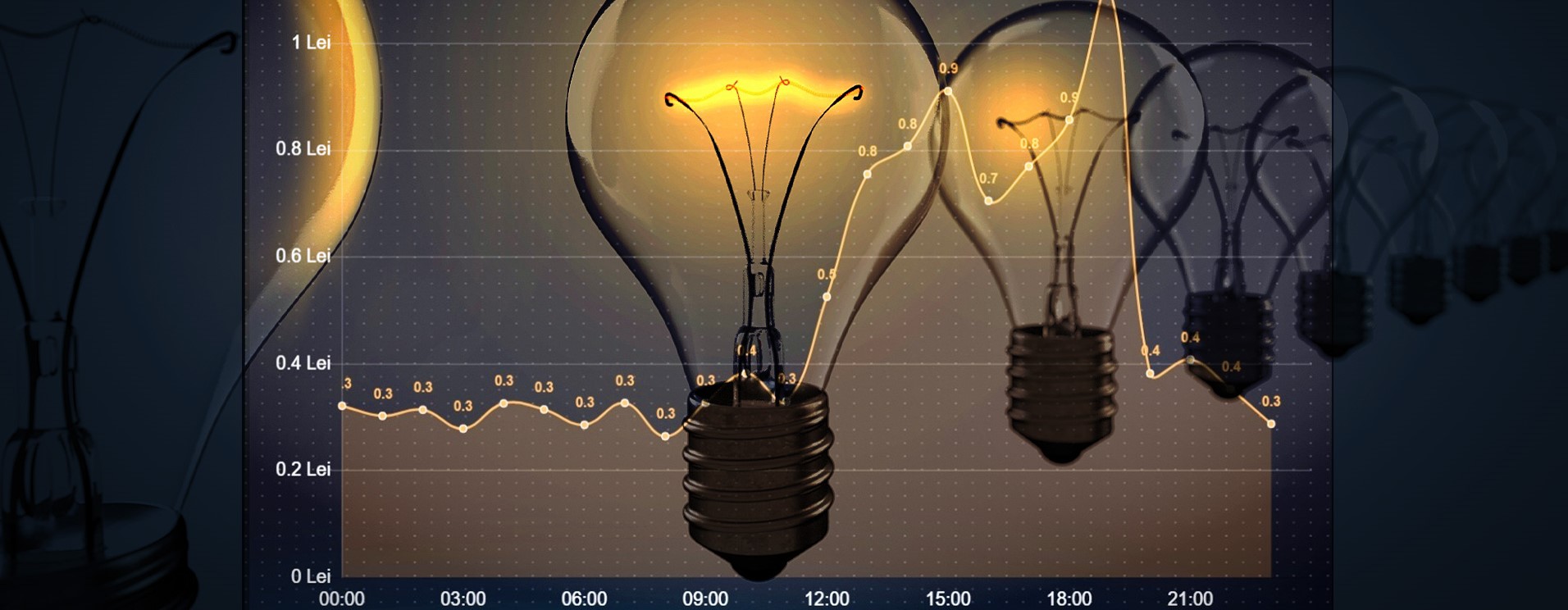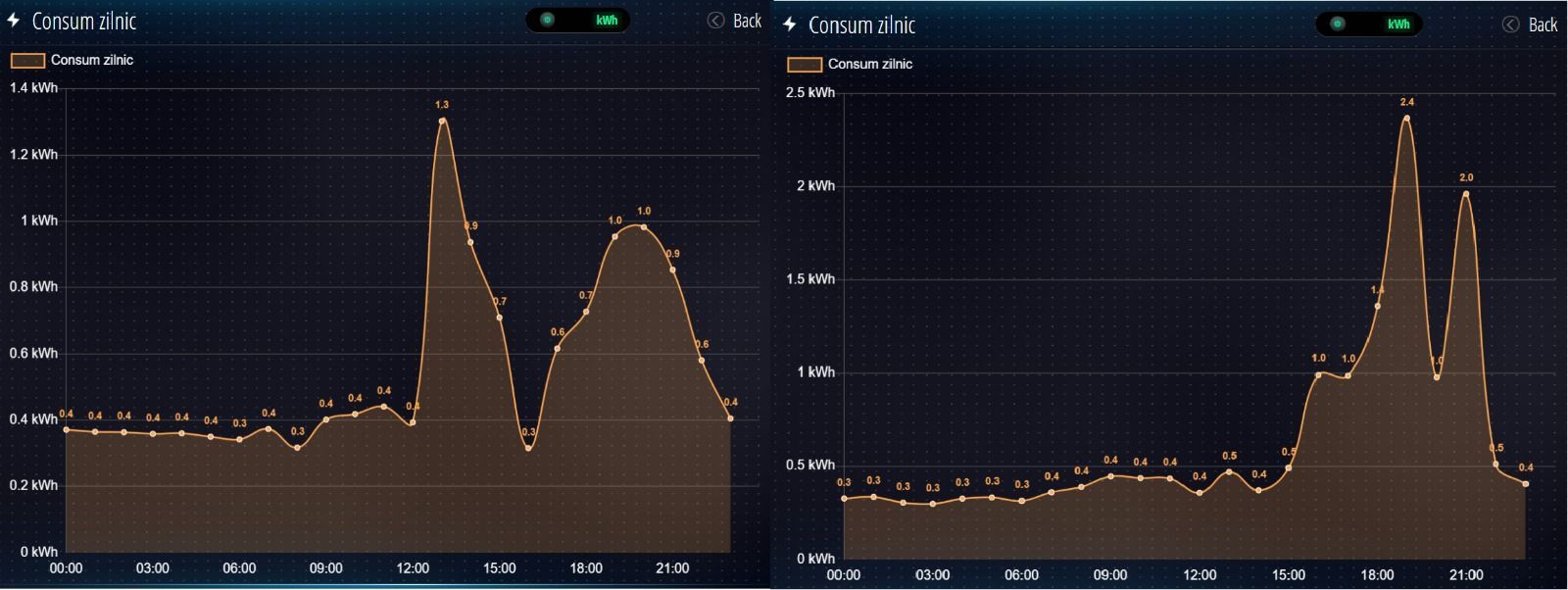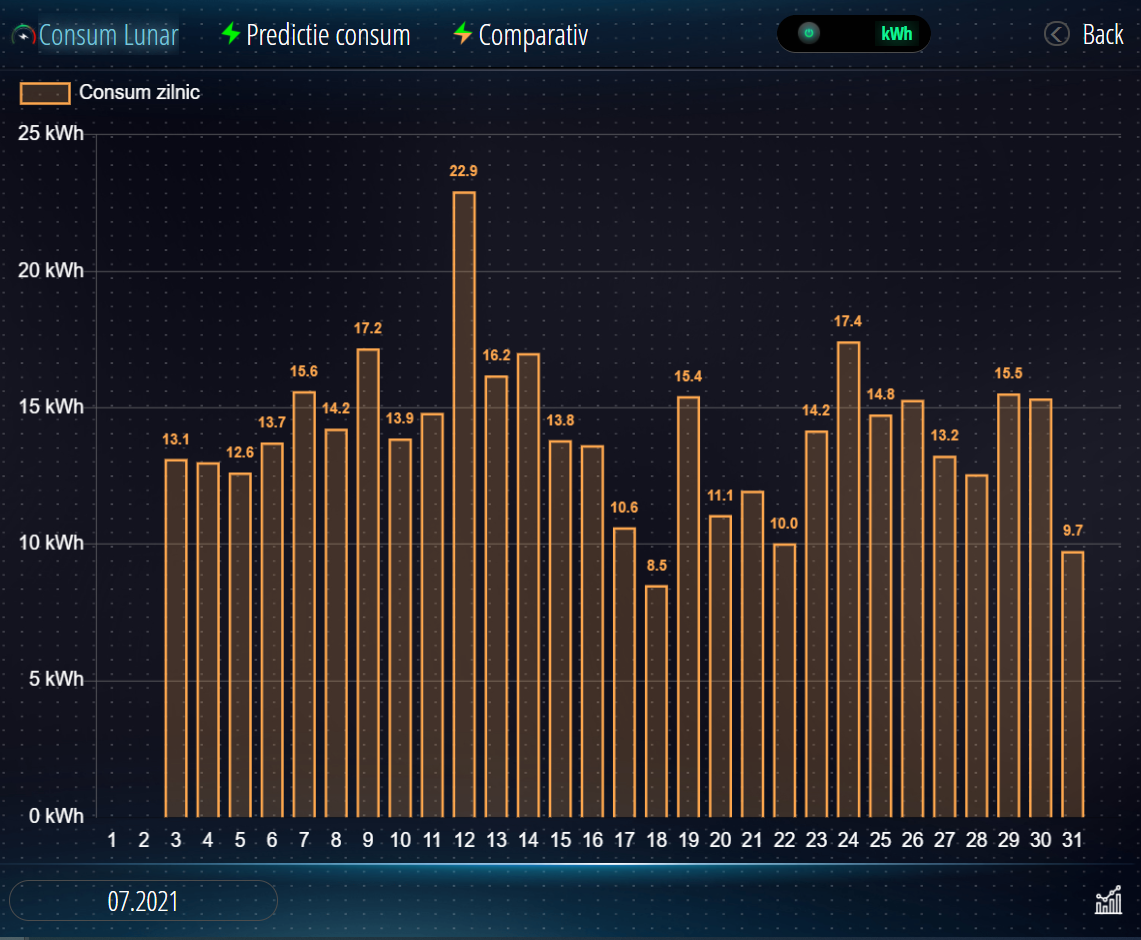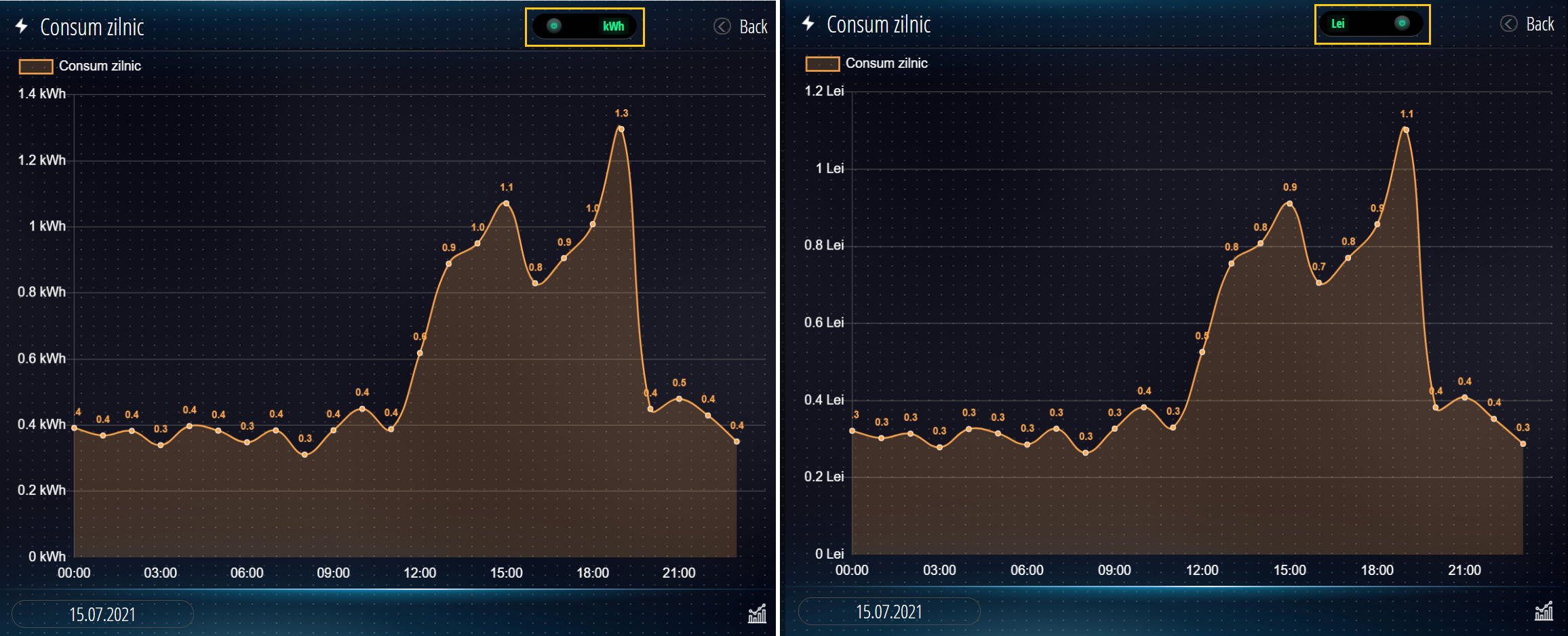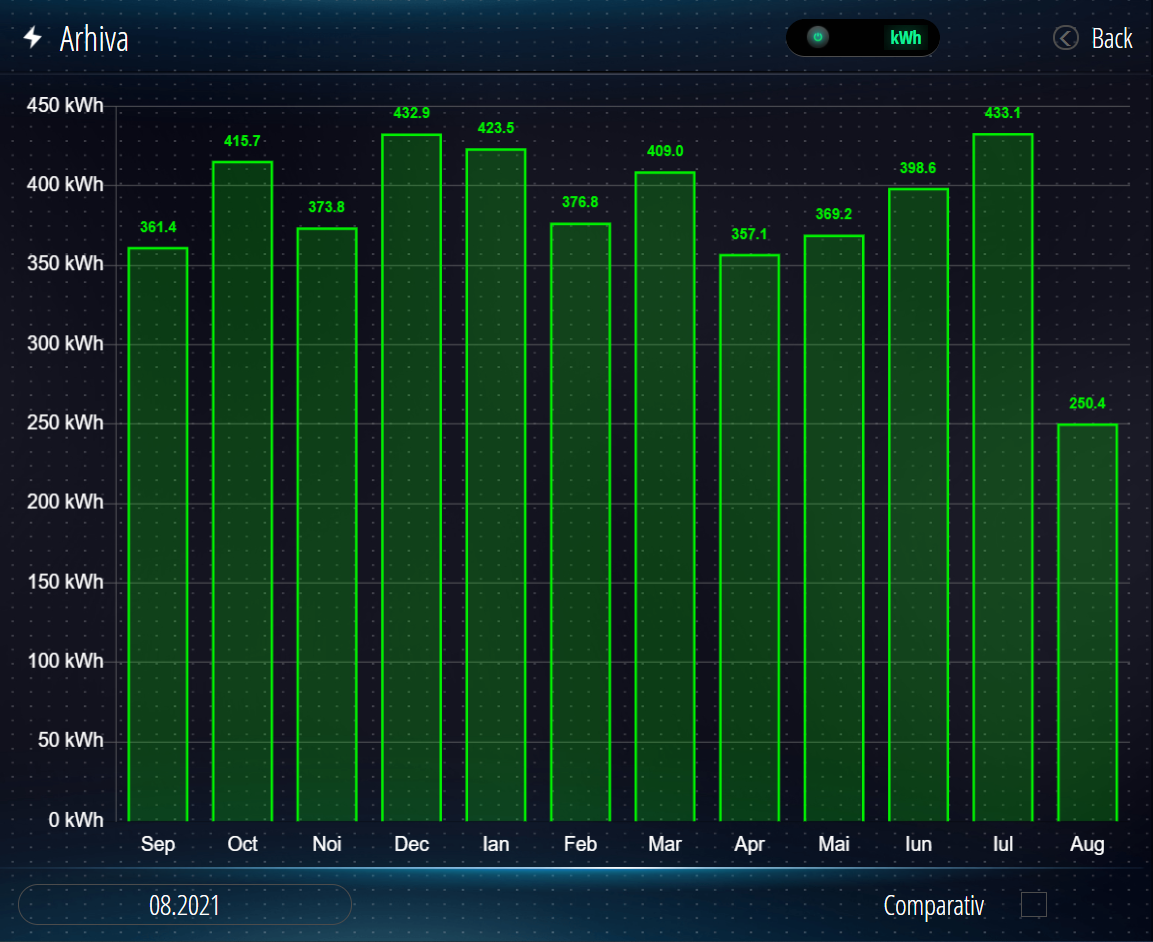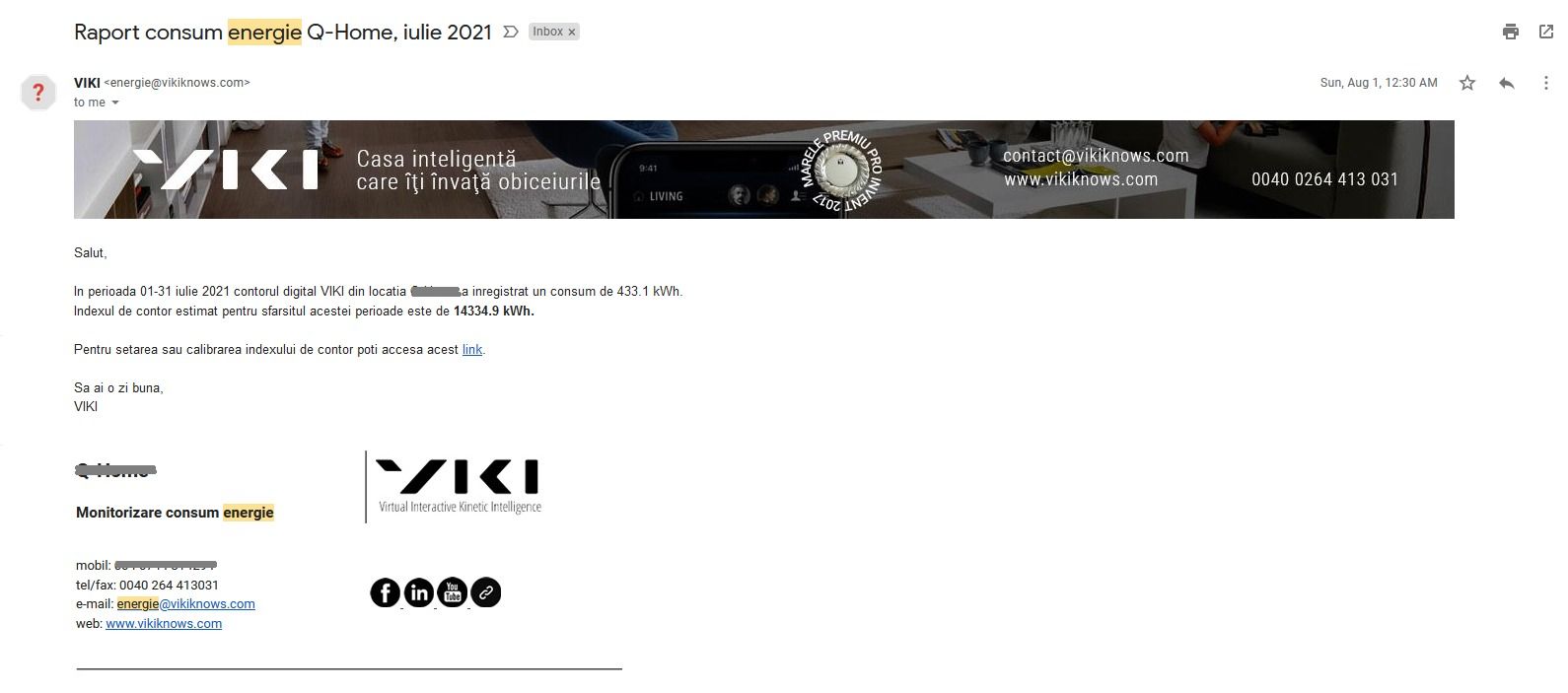How did we get here?
At the beginning of 2021, we, the members of the VIKI team, accepted the challenge to develop a model for predicting energy consumption in a living space, monitoring the way family members interact with household appliances, lights, climate, shading systems or multimedia devices. We have developed a supervised learning algorithm that uses machine learning, which not only stores observations related to the time intervals when users are at home, learning, relaxing or sleeping, but also integrates in the analysis and parameters related to the weather forecast (Will it rain tomorrow? will the sky be cloudy? What outdoor temperature will we have?) or information about the position of the sun in the sky, the time when it rises or sets, to determine the amount of natural light available.
The green graph above shows the results of a prediction model developed based on observations stored for 8 months, the estimate (green) being made 24 hours before the house actually consumes the energy highlighted by the orange graph.
Thus, in the image above, the new interface in the energy module provides the user with a comparison between the energy actually consumed, from hour to hour, and the consumption prediction made 24 hours before by the VIKI algorithm. The ultimate goal of the whole effort is to estimate the energy demand of the house for every 15 minutes of the 24 hours of a day and use artificial intelligence to manage non-essential consumers (whose operation can be delayed), so that household energy costs to be minimal.
Even though in Romania there are not yet widely available differentiated prices for day / night or variable costs of electricity depending on consumption peaks, from the daily observations analysed in the months of project development there is a concentration of energy consumption in the second part of the day (15: 00-22:00), when household activities are more likely to be carried out . It is easy to see that we have a household energy consumption that increases several times compared to the night or morning interval.
Do we change the consumption pattern?
In the next period we intend to develop a module for intelligent management of energy consumed by household appliances. The home management software (VIKI) will be able to decide, for example, that the washing machine, dishwasher or charging the battery of the electric cars could be done outside the peak hours, so that the peaks of electricity consumption are flattened, the efforts of electricity suppliers being thus reduced by intelligent energy consumption.
We present below, briefly, some facilities of the module already developed, which provide information for monitoring and analyzing electricity consumption:
A. Electricity consumption for each day of a selected month
B. Electricity consumption per hour of the day, expressed in energy and cost
C. History of electricity consumption for each month of the year
D. Comparative history of electricity consumption
E. Notification sent via e-mail with the index at the end of the month
